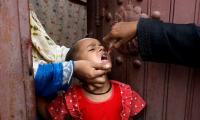Pakistani establishment which had arrested him in February 2008 from Quetta and then released him in January 2014 to allow him to play his role in strengthening and facilitating peace process in Afghanistan.
In fact, the mystery surrounding Mulla Omar’s death has deepened further with the recent statement by Mulla Mansoor Dadullah, giving credence to some earlier reports that he was killed.
While the Afghan government, the Taliban and the family circles of Mulla Omar have already confirmed his demise, the circumstances of his death remain uncertain in view of the conflicting reports suggesting that he was either shot dead or poisoned to death. While the BBC claimed that Mulla Omar had died a couple of years ago in Pakistan, a statement issued by the Taliban spokesman Zabihullah Mujahid said on July 30, 2015 that he breathed his last in Afghanistan due to sickness as his health condition deteriorated in the last two weeks.
While it is yet to be established if Mulla Omar had died two weeks ago or two months ago, the circumstances surrounding his reported death are obviously intriguing. The Fidai Mahaz, a splinter group of the Taliban in Afghanistan, rejected Zabihullah Mujahid’s statement
on August 1 that Mulla Omar had died a natural death, and claimed that he was poisoned to death. The anti-talks extremist group is headed by Haji Najibullah, who used to be a close aide of former Taliban commander Mulla Dadullah Akhund. The same group had confirmed Mulla Omar’s death for the first time on July 22, 2015 in a statement that eventually forced the Afghan Taliban to make public his death a week later.
While some Taliban leaders have tried to play down reports of Mulla Omar having been killed by stating that he died of tuberculosis, the fact remains that the only ailment he reportedly suffered was a heart attack which was reported on January 7, 2011 by The Washington Post, saying that the Taliban ameer had to be rushed to a Karachi hospital for treatment after which he was allowed to leave. But the Taliban spokesman had refuted the report, saying: “Mulla Omar is healthy and has no heart trouble. He is in Afghanistan. If the Americans know where he is, then why don’t they arrest him and claim the reward?” Pakistan’s ambassador to America also dismissed the report in the Washington Post as baseless. Almost five months later [on May 25, 2011], the Afghan intelligence agency claimed in a statement that Mulla Omar was in the custody of the Inter Services Intelligence and he has been restrained from making any contact with his commanders in Afghanistan. Almost six weeks later [in July 2011], the Afghan Taliban’s Website was hacked, leading to the remark that Mulla Omar had died “after an illness of the heart”. But the report was strongly refuted by the Taliban spokesman as baseless.
While no one can be sure how, when and where Mulla Omar was actually killed, a well-known American weekly news magazine has published a detailed report on the possible whereabouts and activities of the fugitive Afghan Taliban ameer after the fall of his government in Kabul in 2001. Newsweek has claimed in its latest report that before his death, Mulla Omar was holed up among the desolate mountains of Nao-Zad district in Helmand province, in an area of tiny villages known collectively as Taizeini. “Few maps show the place, but it’s roughly 100 miles northwest of Kandahar. A good friend was with him. Mulla Abdul Jabbar, a native of Zabul province, had served during the years of Taliban rule as governor of the central Baghlan province. According to one of Jabbar’s relatives, he never went home again after 2001. Instead, he stayed faithfully by Omar’s side as his messenger and attendant. The family friend says Jabbar was the Taliban leader’s only link to the Quetta Shura, the ruling council [of the Afghan Taliban]”.
As per the Newsweek report, “Omar told Jabbar what to do in the event of his death or capture - get word to Mulla Sheikh Abdul Hakim. The religious scholar, a long-time friend and adviser of Omar’s, makes his home in Quetta where the Taliban leadership resides. Hakim and Jabbar quickly relayed the news to three other senior Taliban figures. One was Mulla Akhtar Mansoor, the head of the Quetta Shura. Another was Mulla Qayyum Zakir, director of the Taliban’s military council at the time. And the third was another religious scholar and long-time Omar friend, Mulla Abdul Salam, who lives and preaches in the city of Kuchlak, a few miles outside Quetta. A week after Jabbar brought his news to Quetta, the council chiefs Mulla Mansoor and Qayyum Zakir held a private meeting with the two religious scholars. The family friend says Mullas Salam and Hakim formally gave Omar’s turban to Mulla Akhtar Mansoor, appointing him to be his successor as ameerul momineen.”
He said this while chairing high-level meeting in Sukkur on Sunday
He says certain groups were undermining country’s integrity for monetary gains
Punjab got allocation for 34 uplift programmes under the PSDP with a value of Rs693.4 billion, says Shazia
Incident occurred apparently due to gas leak and further investigation is underway, says SHO
He reaffirms govt’s commitment to finding sustainable and permanent solution to dispute
IMF expects Pakistan’s GDP to grow at 3.5% in FY25; frequent internet disruptions raise concerns regarding country's...







